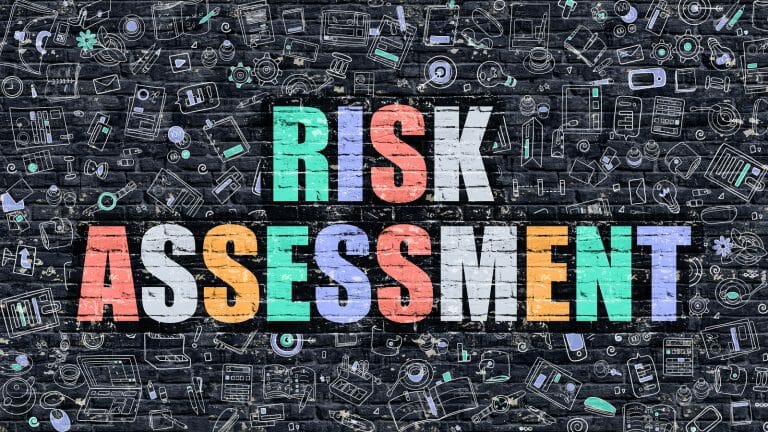
CMS is more of a corporate compliance program than it is a technology. It comes across as a series of procedures, processes, and policies that govern compliance efforts. However, information security integrates across the CMS because more companies now embed technology in their enterprise, and usually, compliance requirements lay emphasis on cybersecurity.
Defining Compliance
Management System
How Can You Define A CMS?
A CMS emphasizes how a company manages legal requirements and its capacity to incorporate them throughout the company’s processes. An organization should create an integrated system that integrates employee training, operational reviews, focused business undertakings, and corrective action plans.
What is Compliance Risk?
The financial sector is a highly regulated industry often faced by compliance risk equated to financial risk. Whether it is the federal Consumer Financial Protection Bureau (CFPB) sector, the Federal Deposit Insurance Company (FDIC), or the Comptroller of the Currency (OCC), there is a risk of facing fines resulting from non-compliance
The OCC
The OCC in December 2018 defined the four significant risks facing the federal banking system. Out of the four, compliance risk resulted from amended client protections and operational risk from a challenging working environment including cybersecurity.
The FDIC
The FDIC with the Financial Crimes Enforcement Network (FinCEN) also released a joint statement expounding on their commitment to technologies and innovative strategies to help in better anti-money laundering /Bank Secrecy Act (AML/BSA) for managing compliance risks.
The CFPB
The CFPB collaborated with the Consumer Advisory Board, the Credit Union Advisory Council, and Community Bank Advisory Council to engage in an emergency trends review in the financial services industry. They focused on the supercharged rise of consumer access to financial records and the use of artificial intelligence. The quickly rising new technologies now increase the risk of unauthorized sharing of data due to the inadequacy of an institution’s operations and controls, both of which could lead to hefty fines. As such, CFPB a consumer protection agency mainly focuses on the value of data integrity, authentication, and user access.
Creating an Effective CMS
You could assume that a CMS evaluates how your financial institution is protecting customers. The truth is; market transactions continue to embed enabling technologies strongly. Therefore, CMS must focus on how data is protected to limit the unintended repercussions that could eventually lead to the process of customer complaint response.
The Board of Directors
This is the body that sets your business objectives allowing the organization to mitigate and manage risks. Should you have plans of incorporating digital technology for loan servicing, your vendor must first establish controls to ensure consumer protections are sustained.
Compliance Program
Your compliance program must comprise the written documents, formal, procedures and policies, monitoring, corrective actions, and training. These policies focus on Fair Lending and Mortgage Servicing. Today, however, financial institutions are depending more on Software-as-a-service (SaaS) platform to engage in communications or data collection, meaning you need to look around ways in which technology integrates into the process to ensure you are protected from privacy violations under Graham-Leach-Billey Act (GLBA)
Consumer Complain Management Program
You must be in the capacity to respond to inquiries and complaints from consumers and at the same time monitor, analyze, and track them. You also must protect customer data from unauthorized access that could impact its availability, confidentiality, or integrity. For instance, the IT infrastructure is built to support auto financing objectives. If the auto lender is not secure, the data is may be inappropriate. As such, you could find yourself violating requirements.
Compliance Audit
Have a program and also engage third-party auditors to foresee the authenticity of your IT supply and organization. The CFPB Supervision and Examination Manual incorporate the Electronic Funds Transfer Act and GLBA.
Who Should Be Involved?
Your CMS as is the case with any other compliance requirement engages various external and internal stakeholders.
Senior Management
The senior management engages the vendor risk management (VRM) process. Senior management evaluates the written documents to ensure there is proper alignment from the vendor.
Compliance Officer
This body oversees the CMS. The officer is in charge of all operations and must maintain insight into the way the company handles vendors and information.
Front-Line Employees
This body acts as the first line of defense against wrongful access to customer data. It enhances the proper creation of passwords and only authorized staff can access it.
Incorporating Technology as Part of Your CMS
Data security must be integrated into all operations. Although most customer regulatory requirements are not elaborative on data protection, information is shared with third-parties for better asset results. This tool offers risk management, compliance management, and capabilities of workflow management, meaning many CMS tasks can be wrapped. Organizations communicate better internally with our task prioritization and functionalities of workflow tagging.

Author Bio
Ken Lynch is an enterprise software startup veteran, who has always been fascinated about what drives workers to work and how to make work more engaging. Ken founded Reciprocity to pursue just that. He has propelled Reciprocity’s success with this mission-based goal of engaging employees with the governance, risk, and compliance goals of their company in order to create more socially minded corporate citizens. Ken earned his BS in Computer Science and Electrical Engineering from MIT. Learn more at ReciprocityLabs.com.

Founder Dinis Guarda
IntelligentHQ Your New Business Network.
IntelligentHQ is a Business network and an expert source for finance, capital markets and intelligence for thousands of global business professionals, startups, and companies.
We exist at the point of intersection between technology, social media, finance and innovation.
IntelligentHQ leverages innovation and scale of social digital technology, analytics, news, and distribution to create an unparalleled, full digital medium and social business networks spectrum.
IntelligentHQ is working hard, to become a trusted, and indispensable source of business news and analytics, within financial services and its associated supply chains and ecosystems






























